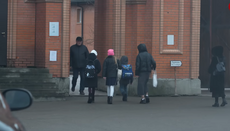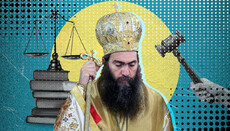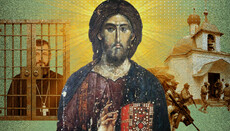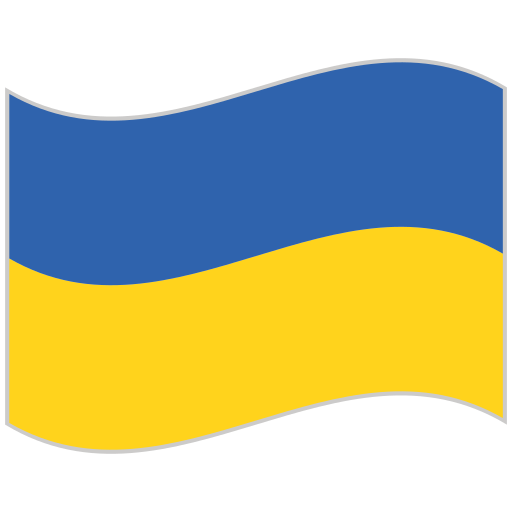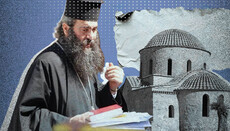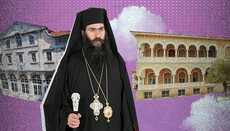Phanar’s scheming in the Church of the Czech Lands and Slovakia
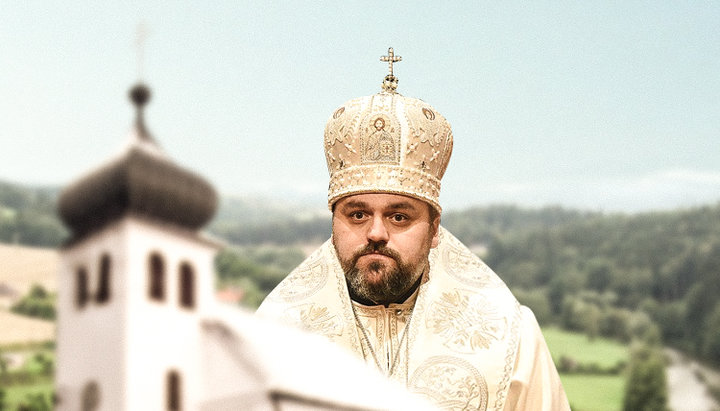
How the actions of Constantinople bring confusion among the Orthodox of Moravia.
The Patriarchate of Constantinople intervenes in church affairs not only in Ukraine. For several years now, representatives of Phanar have been trying to take control of the Orthodox Church of the Czech Lands and Slovakia (OCCLS).
Having granted the Tomos of autocephaly to this Church back in 1998, the Church of Constantinople did not reveal its power ambitions for 15 years. But everything changed after the retirement of the Archbishop of Prague, Metropolitan Christopher (Pulz), when the election of the new Prague Hierarch took place.
The UOJ has already published a detailed account of how, in 2013, representatives of the Church of Constantinople, Metropolitan Emmanuel of Gaul and his colleague Metropolitan Arsenios of Austria, tried to become a part of the Synod of the OCCLS and assume the leadership in it; how Constantinople in 2014 did not recognize the results of the Local Council of this Church and the election of Metropolitan Rostislav as the Primate, which in fact led to the split of the Czech-Slovak Church. Then only the necessity to hold the Cretan Council in 2016 forced Patriarch Bartholomew to ease his pressure.
However, three years later, Phanar continued its provocations against the Church of the Czech Lands and Slovakia. In 2019, the bishops of the Patriarchate of Constantinople established a parallel church structure in the Czech Republic, which is completely unacceptable from the point of view of canon law.
In the same year, Bishop Isaiah (Slaninka) of Sumperk, ordained by Phanariotes in 2015 to serve in the OCCLS, contrary to the decision of the Synod of the Czech-Slovak Church on non-recognition of the OCU, served in Kiev with members of this schismatic structure.
The Doctor of Theology and member of the Diocesan Council of the Prague Orthodox Diocese of the Orthodox Church of the OCCLS, Jakub Jiří Jukl, talks in detail about how Phanar operates in the canonical territory of the Czech-Slovak Church.
* * *
In recent weeks, alarming news has begun to come from the Olomouc-Brno Diocese of the Orthodox Church of the Czech Lands and Slovakia. Things are happening that threaten to destroy the fragile peace and unity of the Church, established on the basis of agreements concluded in January 2016 in Constantinople. They were supposed to put an end to the ambiguities that arose in our Orthodoxy after the resignation of the former Metropolitan Christopher.
Despite the fact that these agreements were never finalized (for example, priests and nuns of the Olomouc-Brno Diocese who were expelled for their loyalty to Metropolitan Rostislav and the Holy Synod were not reinstated), everyone hoped that over time everything would be resolved and the situation would get better.
But all hopes for the peaceful development of our Church ended up with nothing on August 19, 2019. On this day, a society was founded under the name “The Holy Patriarchal Stavropegial Monastery of the Assumption of the Blessed Virgin Mary, a registered society”, which passed state registration on October 1, 2019 at the Regional Court in Ostrava.
What is hiding under this name? Stavropegial monasteries are monasteries being directly subordinate to the head of the Local Church (patriarch, in some Churches, to the metropolitan), although they are located in the territory of another diocese. An ignorant reader might think that this monastery, although located in the Olomouc-Brno Diocese, is subordinate to the Primate of our Local Church, Metropolitan Rostislav.
In 2019, the hierarchs of the Patriarchate of Constantinople established a parallel church structure in the Czech Republic, which is completely unacceptable from the point of view of canon law.
However, everything is different. The chairman of this company according to the judicial protocol and its charter is “Dr. Konstantinos Kardamakis”. This is the civil name of Bishop Arsenios, Metropolitan of Vienna and Exarch of Hungary and Central Europe, who belongs to the jurisdiction of the Ecumenical Patriarchate (the date of birth given in the relevant documents is the same).
It follows that the bishop of one jurisdiction (of Constantinople) proposes to act in the canonical territory of another autocephalous Church (the Orthodox Church of the Czech Lands and Slovakia). Since the founding of this society and the appointment of Metropolitan Arsenios as its head took place completely without the knowledge and even consent of the Holy Synod and Metropolitan of the OCCLS (as confirmed by Bishop George of Košice-Michalovce), we are dealing with the obvious interference in the sovereign sphere of the canonical jurisdiction of our Local Church.
There is no doubt that the Ecumenical Patriarchate – of course, if Metropolitan Arsenios acts with its knowledge – will reason it with the Tomos on autocephaly it granted to our Local Church in 1998. But even this Tomos, according to which the autocephaly of the Church of the Holy Spirit is significantly limited and in many respects subordinated to Constantinople in no case, albeit with a more free interpretation, gives the Ecumenical Patriarchate the right to circumvent or directly ignore the Holy Synod of this autocephalous Church, as well as its metropolitan. Recall that Metropolitan Rostislav in Constantinople enjoys quite a lot of respect and participated as the Primate of the Church of the Czech Lands and Slovakia in the Bishops’ Council on Crete in 2016.
Of course, the intervention of Metropolitan Arsenios in the canonical affairs of our Local Church would not have been possible without the assistance of at least some members of our clergy. We are talking mainly about the vicar of the Olomouc-Brno diocese, Bishop Isaiah of Sumperk (secular name Slaninka). It is he who also appears in the Stavropegial Monastery society as its vice-chairman (see the document here).
But the intentions of the founders of the Stavropegial Monastery are not limited to the foundation of the monastery but go much further. According to the charter of this society, its goal, among others, is “the creation of contact spiritual centers (sketes). <...> To accomplish this task, the chairman of the society (abbot) appoints the clergy to whom the canonical mission is assigned” (quotes from the charter).
Even the Tomos, granted to the Czech-Slovak Church by the Constantinople Patriarchate, gives the Ecumenical Patriarchate no right to circumvent or directly ignore the Holy Synod of this autocephalous Church, as well as its metropolitan.
From this it follows that in Moravia, the Stavropegial Monastery of the Assumption of the Blessed Virgin Mary should emerge in Vilemov (where at present there is only a monastery building but no monastic community). It should be added that we are talking about a nunnery, and the nuns several years ago were expelled from there because they remained faithful to the Metropolitan and the Holy Synod. According to the agreements of January 2016, they were supposed to return to the monastery, but this did not happen.
This stavropegic monastery should be subordinate to Metropolitan Arsenios, more precisely, the Ecumenical Patriarchate. The monastery will have the right to found its monasteries in other places where the “chairman of the society” (i.e. Metropolitan Arsenios) will appoint the respective clergy.
Based on the fact that theoretically it is about the hermitages of the stavropegial monastery subordinate to the Patriarch of Constantinople, it is obvious that no consent will be taken into account either from the Holy Synod or from the Metropolitan of the Czech-Slovak Church or, perhaps, from the corresponding diocesan bishop.
Therefore, it threatens to establish some parallel church structure under the omophorion of the Ecumenical Patriarchate on the canonical territory of the Orthodox Church of the Czech Lands and Slovakia.
These fears are further reinforced by the fact that Vladyka Isaiah, the vice-president of the society, is the statutory body of all three monasteries in the territory of the Olomouc-Brno Diocese (in addition to the monastery of the Assumption of the Blessed Virgin Mary in Vilemov, the monastery of St. Ludmila in Brno and the monastery of St. Gorazd in Hruba Vrbka), as well as three other church communities of this diocese (Olomouc – here there is a Cathedral itself, Prostejov and Uhersky Brod). These facts can be checked on the official website of the Ministry of Culture of the Czech Republic in the Register of Registered Legal Entities / Orthodox Church section.
At the same time, at least in the mentioned monasteries in Brno and Hruba Vrbka it would be possible to establish sketes, which are mentioned in the charter of the Stavropegial Monastery’s society. According to the classified information, confirmed by several sources, an attempt has already been made to transfer the Villemov monastery to the ownership of the aforementioned society, but at the last moment this was hindered by the timely intervention of the Prague Archbishop, Bishop Michael, as the highest representative of the Orthodox Church in the Czech Republic.
The foundation of the "stavropegic monastery" is particularly strange because it happened in a completely non-canonical way, that is, by civil law. The Stavropegial Monastery, in fact, is not a church institution, but just a kind of society based on the civil code of laws just like other interest societies in the Czech Republic, starting with firefighters and ending with aircraft models. In the end, the very name "Holy Patriarchal Stavropegial Monastery of the Assumption of the Blessed Virgin Mary, a registered society", from the point of view of the law, does not foresee any obligations at all just like, for example, the "Kersko Gardeners Society".
The foundation of the "stavropegic monastery" is particularly strange because it happened in a completely non-canonical way, i.e. by civil law.
Therefore, the point is not only about trying to circumvent state law and completely disregard the canonical church structure but also about actions committed unworthy of such holy things as the coenobium of people who have dedicated themselves to Christ.
On November 21, 2019, Metropolitan Arsenios responded to reports of non-canonical actions of the Ecumenical Patriarchate, which began to spread around the world. He stated that it was not a matter of creating a parallel canonical structure and that diocesan Bishop Vladyka Simeon addressed the Ecumenical Patriarchate with a petition for the establishment of a stavropegial monastery in the Olomouc-Brno Diocese. According to him, the Diocesan Council of the Olomouc-Brno Diocese was supposed to join this petition.
In addition, the bishops of the Czech-Slovak Church, including Metropolitan Rostislav, were allegedly informed about everything. Metropolitan Arsenios also equated the stavropegic monastery, subordinate to the Patriarchate of Constantinople, with the already existing Metochion (Plenipotentiary Representation) of the Moscow Patriarchate in the Czech Republic, which has been functioning for many years under the omophorion of the Russian Orthodox Church.
However, at least part of the statements of Metropolitan Arsenios is not based on truth. The very next day, on November 22, 2019, Archbishop George of Košice-Michalovce, a member of the Holy Synod of the OCCLS, resolutely refuted the information that the Holy Synod had ever received or discussed the statement of Constantinople on the establishment of a stavropegic monastery. The Synod was by no means informed of the foundation being prepared; individual bishops received the news about it only by chance at second hand.
As for the metochion of the Moscow Patriarchate, we can add that, of course, it would not be a problem to found in our Local Church a similar metochion of the Patriarchate of Constantinople but only with the consent of the Holy Synod of the Church and Church Council, just as it was in the case of the Moscow Representation. This was, by comparison, also properly registered in the Czech Republic under the mentioned law on churches and religious organizations.
In all this strange case concerning the stavropegial monastery, one thing is striking: the absolute silence of the diocesan bishop of the Olomouc-Brno Diocese, Archbishop Simeon. He is not mentioned in any of the documents relating to the above monastery, he did not give his blessing for this institution, but, despite this, everything happens on the territory of his diocese.
The words of Metropolitan Arsenios that the monastery is based on his repeated petition, therefore, cannot be confirmed. In the whole case, only the vicar, Vladyka Isaiah speaks on the Moravian side (supplement from December 2019: at the meeting of the Holy Synod on December 17, Vladyka Simeon really stated that Vladyka Isaiah carried out this initiative without his knowledge and blessing).
It is not only about an attempt to circumvent state law and completely disregard the canonical church structure, but also about actions completely unworthy of such holy things as the coenobium of people who have dedicated themselves to Christ.
And indeed, it is a question on whose behalf Bishop Isaiah speaks actuallly. It seems that recently he has ceased to respect the authority of the Metropolitan and the Holy Synod of the Orthodox Church of the Czech lands and Slovakia. On November 20-21, 2019, he concelebrated with Epiphany Dumenko and other representatives of the so-called Orthodox Church of Ukraine (OCU) in Ukraine.
In January 2019, this OCU received autocephaly from the Ecumenical Patriarchate despite the fact that Ukraine has an independent Ukrainian Orthodox Church. Therefore, the status of the Orthodox Church of Ukraine led by Epiphany is still not canonically clarified and is the reason for serious controversions in World Orthodoxy.
In any case, the Czech-Slovak Church refused to recognize the OCU and considers the Ukrainian Orthodox Church, headed by Metropolitan Onuphry, as the only canonical Church in Ukraine.
For these reasons, Bishop Isaiah, in his active participation in this service, was at the focus of disagreement with the canonical position of our Local Orthodox Church. It was contrary to the fact that on the eve of the service Vladyka Isaiah was warned in writing by the Primate of the Church and Church Council, Metropolitan Rostislav, and his attention was drawn to the fact that such actions would have clear canonical consequences for him.
But Bp. Isaiah neglected the alert of the Metropolitan and took part in the service. This is another manifestation of his close relationship with the Patriarchate of Constantinople, which granted autocephaly to the schismatic Orthodox Church of Ukraine.
We pray to God for our bishops so that He gives them strength and wisdom and that with His help we defend the unity and autocephaly of our Local Orthodox Church, the legacy of Saints Cyril and Methodius and the holy New Martyr Gorazd.
Update as of December 2019: The Holy Synod of the Czech-Slovak Church at its meeting on December 17, 2019, explicitly spoke out against the attempt to establish a stavropegic monastery in a resolution.
Translated from ParlamentniListy.cz

